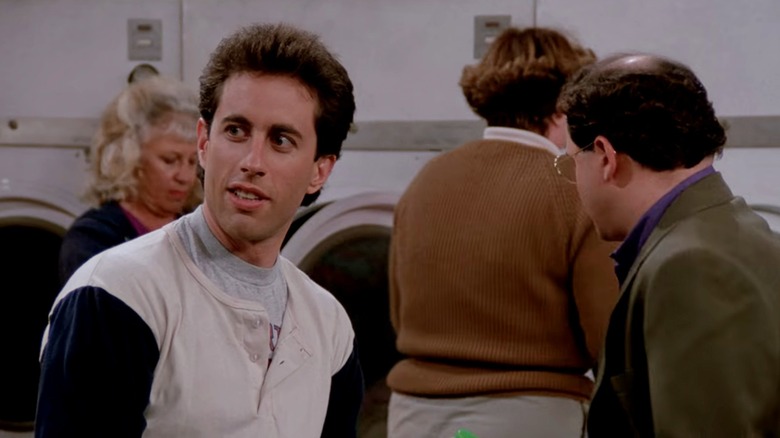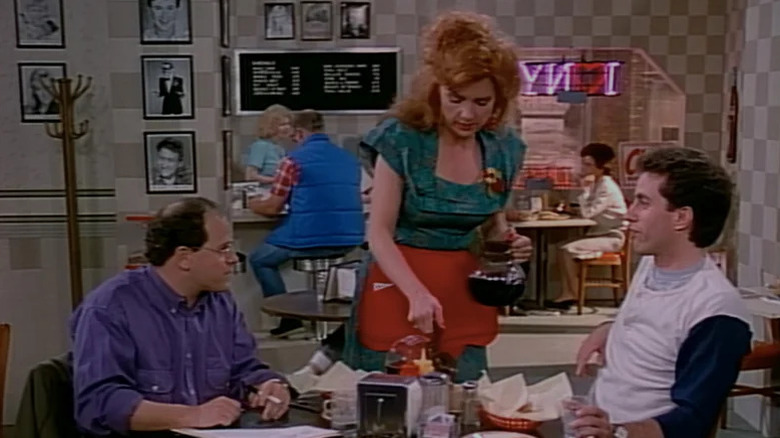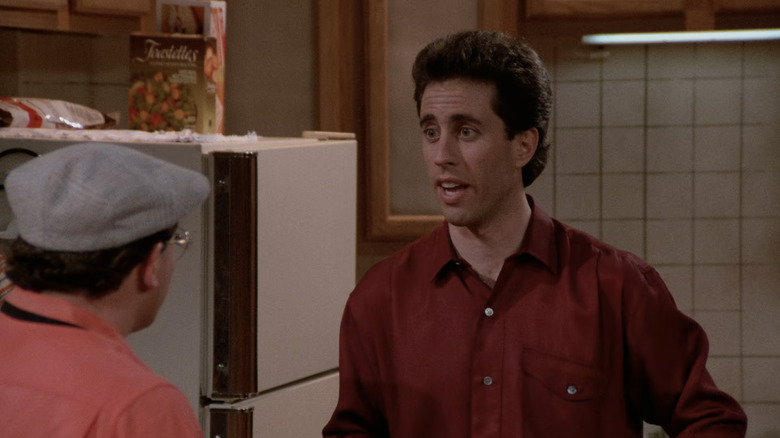
A lot of popular sitcoms had a slow and steady rise in quality and/or ratings, especially in the pre-streaming age. “Parks and Recreation,” for instance, struggled hard in its first season, slowly improved throughout its second season, and only in its third season (once Adam Scott and Rob Lowe joined the cast full-time) did it truly hit its stride.
The hit ’90s show “Seinfeld” also took a while to take off. The writers and actors didn’t hit their groove until season 3, and it wasn’t until its fourth season that it became clear “Seinfeld” was a full-on hit. For the first three seasons the threat of cancellation loomed over it, but around the point of “The Outing” (an acclaimed season 4 episode that coined the “not that there’s anything wrong with that” phrase that spread even outside the fandom) it was clear that “Seinfeld” was here to stay.
However, the slow and steady nature of the show’s rise to popularity is a little overstated. Yes, the show took four seasons to truly become a hit, but it’s easy to forget that season 1 was only five episodes, and season 2 was only twelve. In terms of what a standard episode count of a season of television looked like at the time, that uncertain early period of “Seinfeld” only really lasted less than two full seasons. When fans advise new viewers to “power through” those first few seasons to get to the good stuff, that’s not as tall an order as it sounds.
So, why was “Seinfield” season 1 so short? It was mainly because the pilot was hated by test audiences. As TV Guide would later report, it was normal for many NBC pilots to receive poor feedback, but the hate for that first “Seinfeld” episode was on another level. Some of the notes were, “None of the [supporting characters] were particularly liked,” and, “No segment of the audience was eager to watch the show again.”
Thankfully, NBC gave Seinfeld a chance
99% of shows that got panned this hard by test audiences would’ve never made it to air, but because some of the NBC studio heads enjoyed it — including future NBC resident Warren Littlefield — they took a chance on the show anyway. In July 1989 they released that first episode, “The Seinfeld Chronicles,” but there was no season attached to it. The episode existed entirely on its own. It was only after that episode got decent ratings and reviews that NBC wondered if maybe those test viewers were just a bad batch. They soon ordered four episodes for the rest of season 1, set to air in May the next year. It was basically the TV exec equivalent of dipping your toe in the water.
Much of the credit for “Seinfeld” goes to network exec Rick Ludwin, who took money out of the network’s summer specials budget to give “Seinfeld” those additional summer episodes. As Littlefield said of him in a 2005 interview, “He was not afraid to put himself on the line. A bunch of people may say, `We’re in trouble. We don’t know what to do.’ He would say, `Here’s the show. We must support it. We must believe in it. This can be our future.’ There’s not a lot of people who will stand up, and he did. … It’s rare.”
Those five Seinfeld season 1 episodes: were they really so bad?
As much as “Seinfeld” season 1 is bashed by the show’s own fans, the reviews at the time were more positive than people remember. One critic for the Daily News remarked that although that first season’s decent ratings were likely due to it airing right after “Cheers” — a very lucky timeslot, similar to what “Friends” would benefit from five years later — she argued that this was “one of those happy coincidences where a quality program gets good ratings.”
That same critic compared “Seinfeld” to “The Simpsons,” which had also debuted its first episode in 1989: “[‘Seinfeld’] hasn’t taken on a life of its own, like the ubiquitous ‘Simpsons.’ But NBC has picked up the summer replacement series for next fall, and that’s a small victory for good television.”
It’s a good comparison, because although “The Simpsons” was a massive pop cultural phenomenon from day one, its first season has a similar reputation today as “Seinfeld” season 1. Both debut seasons are widely considered by fans to be weaker than the seasons that would follow, because with hindsight we understand just how much better the show was capable of being. But as both show’s first seasons were airing, critics didn’t have gems like “Homer at the Bat” or “The Soup Nazi” to compare them to; they had to take season 1 on its own terms, and those terms were still pretty flattering.
The Sunday Oregonian praised the first season of “Seinfeld” as a “low-key sensation,” and a critic for the Washington Post complimented those first five episodes for their “laid-back charm.” Of course, much like the backlash over bad-influence Bart in the early “Simpsons” seasons, season 1 of “Seinfeld” still had its fair share of haters. “‘Seinfeld’ is caught, I think, between stand-up comedy and situation comedy and the result is schizophrenia,” wrote one critic, “On paper, it probably looked terrific, one of those bold new notions that’s bound to catch on fire. But on the screen, it’s a bunch of soggy matches.”
One thing’s clear among both the positive and negative reviews: nobody had any idea how big the show would become. Even Seinfeld himself, during an interview while the first season aired, didn’t think the series would ever be the main thing he was known for. “”My life is doing stand-up in nightclubs,” he told The Daily News-Journal. “That’s what I do. The TV series is a project.”




Leave a Reply